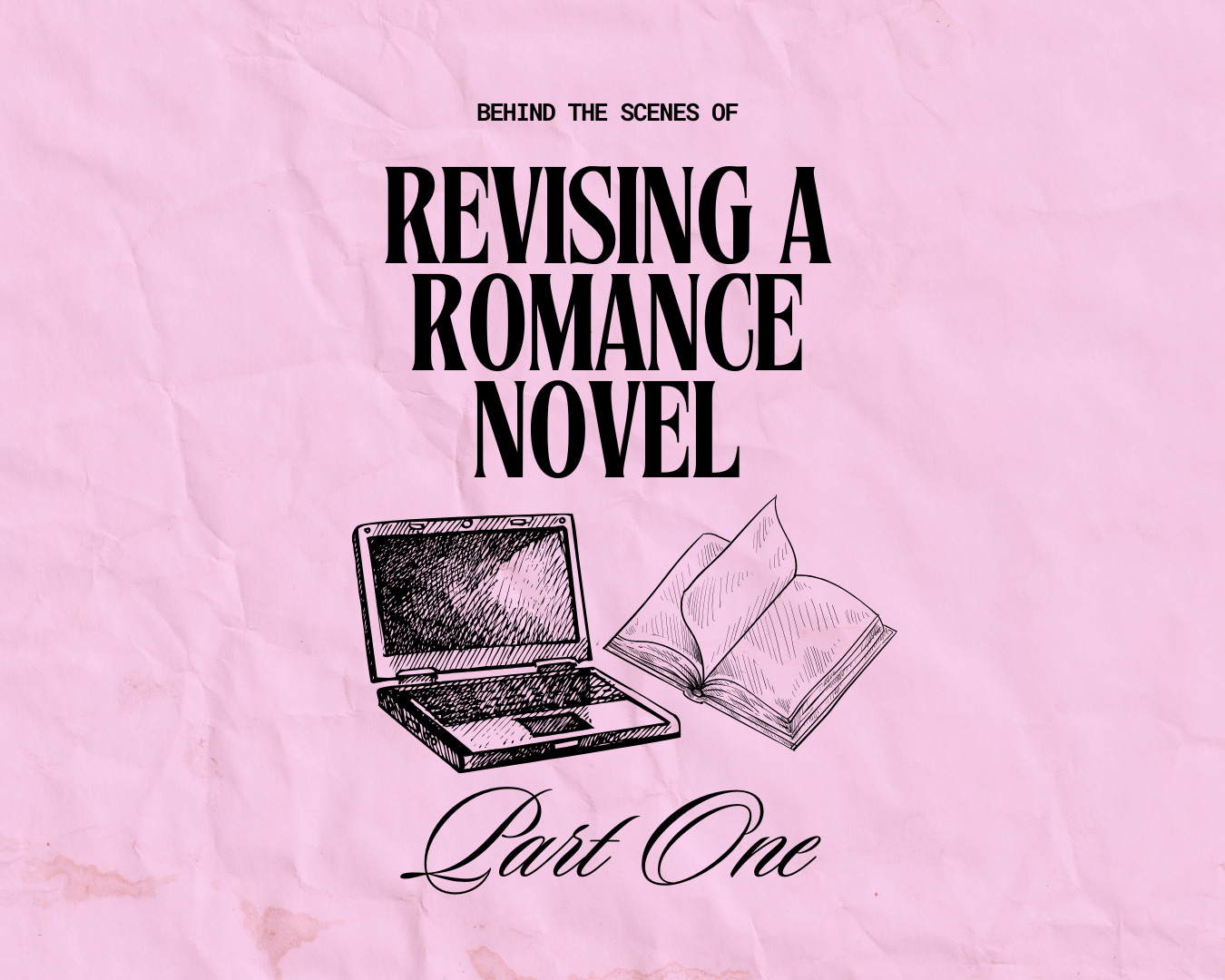Behind-the-Scenes of Revising a Romance Novel (Part 1)
A deep dive into my process of revising Project Reality (a contemporary romance novel)
The word “revisions” stirs up various reactions in writers: fear, excitement, dread, relief, overwhelm—sometimes all at once.
Since finishing the first draft of my contemporary romance novel, Project Reality (official title reveal coming soon!), back in early 2023, my emotions have definitely run the gamut. It’s been a long road to where I am now, preparing to self-publish it in early 2025.
Every writer has their own approach to revisions. Like any part of the writing process, you have to experiment to find what works best for you. In this series, I’m sharing how I’ve revised my debut novel, including what has worked well for me and what lessons I’ve picked up along the way.
I’ve been very open about my writing journey because I’ve always loved seeing how other artists approach the creative process. It’s helped me grow a lot as a writer—and feel less alone—so I like paying it forward in case something I share may help another writer in some way, however small that may be. Most of that journey has been entirely open to the public (and will continue to be), but there are more in-depth parts of the process that I’d like to keep within a smaller circle. Therefore, full access to this particular post and some others will be a thank-you to paid subscribers.
I will continue to share more free posts about my writing and publishing journey, though, so stay tuned for those!
In this post’s deep dive, I’ll cover:
How I organized my revision plan to avoid overwhelm
A breakdown of what changed from draft to draft
What I learned from revising this book
In future posts in this revision series, I’ll talk more about things like finding the heart of the story, diving deeper into the characters, and utilizing feedback from beta readers/editors.
Is there something specific you’d love to know about my revision process and see included in one of the next posts? Let me know in the comments!
I hope any fellow writers reading this find something helpful in it—even if that’s just solidarity for going on this challenging (and at times, a little maddening) but very rewarding journey.
Revisions Deep Dive (Part I)
Working in layers
Writing a novel is a big project. There may be some writers out there who can vomit everything out in the first draft and not have to do much tweaking afterward (y’all are amazing), but I am not one of them. And most writers aren’t, so if you need multiple drafts to get your story right, too, you’re in good company.
Among the moving parts are the story/plot, character development, relationships (in my case, the big romance itself), pacing, world-building, themes, dialogue, and prose. They all need to be strong individually and work seamlessly together.
To avoid overwhelm, I like to work in layers. I do much better when focused on certain elements during each draft—starting with the high-level stuff and working my way down to the details later. Instead of trying to get everything perfect in one go, I gradually build toward the final product. Again, every writer is different, but I’ve discovered through experience that focus is key to doing my best work.
I look at it like building a house—you don’t bring the curtains you’re going to hang the same day they’re pouring the concrete, y’know?
My process of writing and revising a romance novel has looked like this*:
*Please keep in mind that every project is different, so the number of drafts this one has taken doesn’t reflect how many yours should take or even what my next project will take. My modern fantasy project, for example, has gone through a bajillion drafts and will probably go through a bajillion more. This is just a general guideline.
Development and outline
In the first (and most fun and playful) phase of writing a novel, I flesh out my ideas and organize them. I use the Save the Cat! story beats to create the basic framework and then flesh them out further in a more detailed outline. I aim to outline at least 75%- 85% of the book so I have a good foundation for writing the first draft.
I’m not a “pantser” (someone who discovers the story entirely as they write without any outline)— I consider myself a “plantser.” I need to know roughly where I’m going, but I leave plenty of flexibility for discovery as I draft. I have no qualms about deviating from my outline. I just don’t find drafting enjoyable if I don’t already have some legwork done and a structure in place, and it saves me a lot of time later.
This is the blueprint phase. We’re dreaming, researching, and making mood boards. We’re sketching out a plan and estimating measurements (which may need to be tweaked later when we decide to move a wall or remove the second level entirely).
The development/outline stage is about playing with the idea and giving it some form/shape I can mold. I know it will go through many changes once I start drafting, so I’m focused on the high-level framework and exploring what I want this story to be at its core.
For Project Reality, I planned out all the story beats and had a nearly complete outline, which I mostly stuck to in the first draft but ultimately changed a lot in later drafts (though core elements remained the same through all iterations).
First draft
The first draft is still part of the discovery phase, but now I’m stepping into the story rather than developing it from above. In it, I focus entirely on letting the story take on its own life while getting to know the characters. I let everyone loose on the board I’ve set up for them and see what organically forms within it.





